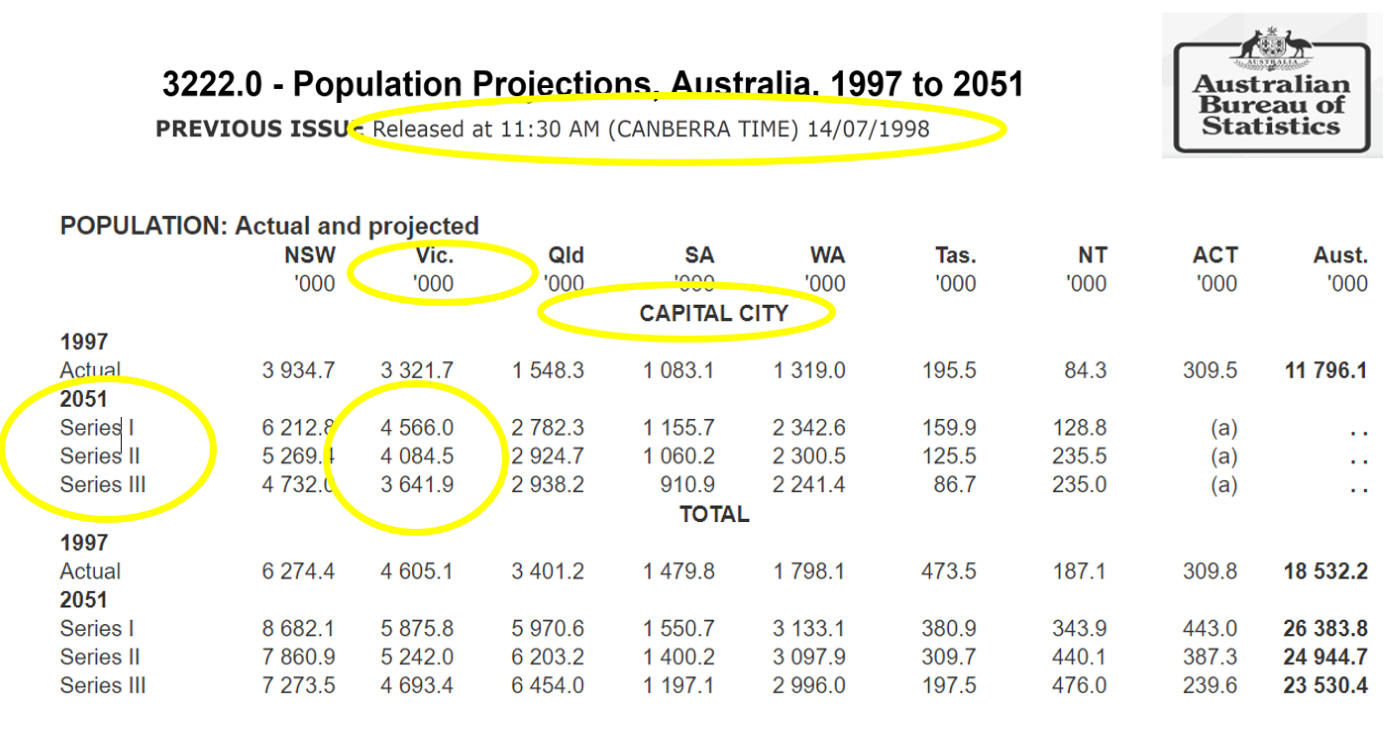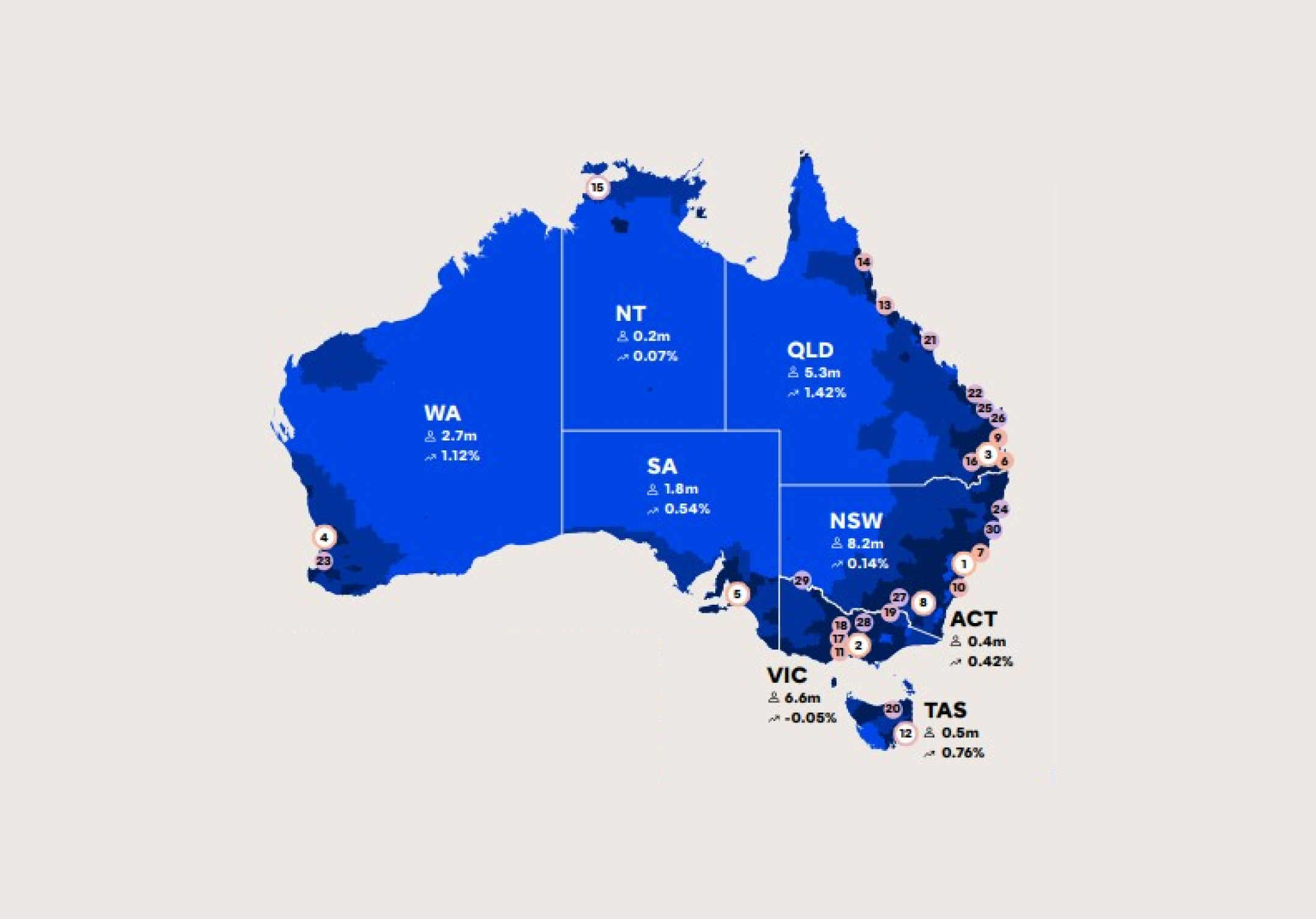Demographics
Melbourne reaches 5 million

On Monday 27 August 2018, Melbourne’s population is due to reach the 5,000,000 milestone, just three weeks after Australia’s population hit the 25 million mark.
Not only is Melbourne Australia’s fastest growing city, but Victoria is Australia’s fastest growing state.
The fastest growing city in the fastest growing state
While Victoria comprises just over a quarter of Australia’s population, it currently accounts for more than a third (37%) of Australia’s annual population growth. In the last year Victoria added 143,400 people which is larger than the growth of NSW, South Australia, Tasmania, the Northern Territory and the ACT combined.
In addition to contributing to 37% of Australia’s growth, Victoria also accounts for 35% of Australia’s Net Overseas Migration and 29% of Australia’s natural increase. Unlike most other states and territories, Victoria has all three factors contributing to its growth; Net Overseas Migration, Natural Increase and Net Interstate Migration. Only Queensland is gaining more people from the other states than Victoria, while states like New South Wales, South Australia and Western Australia are losing far more people than they are gaining from the other states.
The fastest growing city after Melbourne is also in Victoria
In the last year, Melbourne has added 125,424 people which is the largest annual increase of any city in Australia’s history. It is the equivalent of adding one new Darwin to Melbourne per annum.
Based on the current growth rate, Melbourne will add around 132,000 to its population this year which is a larger increase than the population gains of the next 30 largest Australian cities combined.
Melbourne has had the highest average growth of any city in Australia since 2011. Since 2011 it has averaged 2.55%, but in the last 12 months this has increased further to 2.65%.
The only city in Australia growing faster than Melbourne is the neighbouring city of Geelong, which grew by 2.71% in the last year.
Geelong isn’t the only regional city being fed by the overflow of Melbourne’s population growth. Other regional cities in Victoria are also growing faster than the national regional growth average such as Ballarat (1.9%), Bendigo (1.6%), and Albury/Wodonga (1.5%).
Melbourne to overtake Sydney as Australia’s most populated city by 2026
Based on the current population growth rate of Melbourne, it will hit the 6 million mark in 2025, the same year that Sydney will reach that milestone. Melbourne will overtake Sydney to be Australia’s largest city in 2026. Based on the current growth rate, Melbourne will reach 7 million in 2031 and 8 million in 2037 (with Sydney not reaching 8 million until 2040).
The chase over time
Sydney’s population reached 4 million in 1999, and it took Melbourne 10 years to reach that same milestone. Sydney then reached a population of 5 million in 2016 and it has taken Melbourne just two years to do the same. These two cities will reach a population of 6 million in 2025, with Melbourne to beat Sydney in all the population milestones after that.
A population twice as large as the forecasts
Just 20 years ago, when Melbourne’s population was 3.3 million, the projections showed that the city would likely reach 4 million in 2051 with an upper-end forecast of 4.56 million by mid-century.
Clearly the population growth factors have increased significantly since then and now Melbourne is forecast to have a population by 2051 twice as large as even the previous “highball” projection, that is around 9 million.

Source: Australian Bureau of Statistics.




